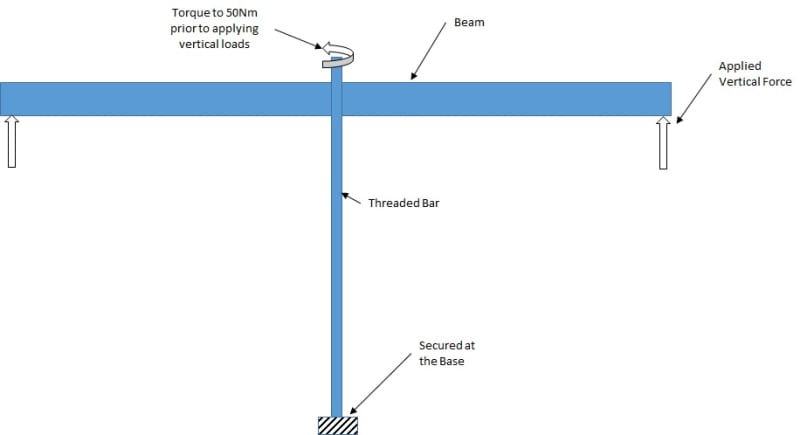Hello,
I am currently working on a fixture which is essentially a beam with upward forces being applied at both its ends. The centre of the beam reacts the total load via a threaded bar which is grounded at its base. The previous derivative of the fixture required that the threaded bar be torqued to 50Nm prior to applying the external vertical forces.
The previous calculations did not account for this additional load due to the pretorque of 50Nm. Should it have been included and if so then should the classical lead screw method be used to evaluate the additional force due to 50Nm? And is it simply a matter of adding the external fore and the torque force to get the actual total load in the system? Please refer to the sketch to elaborate on the setup.
Thank you.

I am currently working on a fixture which is essentially a beam with upward forces being applied at both its ends. The centre of the beam reacts the total load via a threaded bar which is grounded at its base. The previous derivative of the fixture required that the threaded bar be torqued to 50Nm prior to applying the external vertical forces.
The previous calculations did not account for this additional load due to the pretorque of 50Nm. Should it have been included and if so then should the classical lead screw method be used to evaluate the additional force due to 50Nm? And is it simply a matter of adding the external fore and the torque force to get the actual total load in the system? Please refer to the sketch to elaborate on the setup.
Thank you.


